Jai Sri Ram!
Today is such an auspicious day. It is Hanuman Jayanti. On this sacred day, you are all gathered here, I am very happy. Hanuman Jayanti is observed around the world, including Thailand and a few other countries. Hanuman is hailed and worshiped as monkey God. Lord Ganapati too is worshiped around the world. Those cultures have so much respect for the Ramayana too.
On this Hanuman Jayaanti, we are gathered here. The real sevaka, the real Brahma is Hanumanta. Sri Rama himself requested Hanuman to remove his distress and bring news of Sita’s whereabouts. Hanuman found Sita Mata in Ashoka Vana. Sita Mata too requested Hanuman to bring Rama there soon. The mantra chanted there is chanted all around the world.
Tvamasmin Kārya Niryoge Pramānam Hari Sattama
Hanuman Yatna Māsthāya Dukha Kshaya Karo Bhava
Sita Mata and Sri Rama, both requested that Hanuman undertake their mission. We know that Rama is Paramatma, but He requested Hanuman to do the work. Sita Is Maha Kali, Maha Durgi, Maha Saraswati. She is the daughter of Agni, she is no ordinary woman. Had Ravana touched her, he would have reduced to ashes. Sita Mata too prayed to Hanuman.
Hanuman thus was prayed to, by the Gods themselves. Hanuman was cursed as a child. He assumed the sun was a fruit and was about to swallow it when Indra hit him and Hanuman fell down to earth. Then, all Devatas came to Hanuman and poured their energies into Him. Hanuman is not an ordinary God of monkeys. He is Brahma, He is Maharshi. We believe in such Brahma. 99% of people believe in Hanuman, even if they do not believe in God.
There is no greater sevaka than Hanuman who surpasses the Lord in intelligence, strength, fame, courage, fearlessness, health, dynamism, sweet speech, scholarliness, knowledge of grammar and humility. If we pray to Hanuman, He grants us all this.
We have taken birth on this planet and are wallowing in material wants and problems - court cases, hospital, children, grief, etc. We need to pray to Hanuman for success. Even if we do not find success, we will certainly attain peace of mind.
All of you promise Me one thing. Once a week, go to the temple of your choice. That is enough. That is what our tradition is, it is so simple. If you present a Namaskara, it signifies the union of god and being.
Our dharma is very subtle. Remember that when you trace back your ancestry, it goes back to Brahma. We have all taken birth from some great sages who came from Brahma. Everyone. There is no question of caste or creed. We should remember the tradition we are born into.
We should not sell ourselves bread and milk. Those are people who came to our country for business but looted us entirely. Did they come with an army? No. Only 5-6 families came first. And then a few hundred did. Then, they built their army using us and attacked us. Out of greed for food, money and power, some people got sold.
Some others came and said God does not exist. Some others came and incited infighting. Some destroyed our tradition completely. Some are devotees of the village deity, some of Kali, some of Krishna and so on. You must not forget your family deity. When you abandon your family deity, there will be suffering. We should never do that, regardless of who our family is. We have a great tradition. Even if you do not practice the rituals, you should not convert for the sake of food, money, daily wages, etc. Those who try to convert your religion will give you money first and later take money from you.
The women here are all like mothers. You are all the Matru Mandali.
A composition from Maharashtra keeps coming to mind.
"Kanhoba tuzi ghongdi changli"
Krishna, what did you give me? You gave me desire, karma, avidya/ignorance. We constantly have desires, we want this and that. We have so much karma...we have no contentment. We want more and more. We have avidya - we don't know God, Paramatma or Jivatman. We are always lazy. We eat and sleep. What karma is this!
The body is made of dirt and impurities. If we don't shower one day, we smell. O Krishna, what justice is this. This is what you gave me?! You have so many virtues, O Lord. So many praise you sing, sing glories of you. You have countless virtues; can you not give me one virtue? O Kanhoba/Krishna, please help me.
Finally, the composition says: Krishna, let us not argue, let us come to an agreement. I see many great souls who need nothing in life. Yet they worship you and sing praises of you. I wonder why they are always singing your glories - “Vittala”, “Shiva”, etc. Why do they need to? They are all powerful. Are Vishwamitra, Vashishta, Meera Bai, Dhruva, Markandeya ordinary people? They were born in various castes; they were not all Brahmins.
The sages were capable of making an entire creation. Vishwamitra did make a heaven for the sake of one devotee. They are so powerful, they had absolutely no desires, they were thousands of years old, some were immortal, yet they all worshiped You, O Lord.
O Lord, let's not fight. Give me their mindset.
When Purandara Dasa went to Sage Vyasaraya’s Ashrama, he saw eight disciples in various states of mind. He wanted to get Deeksha from the Guru. Some were doing penance, some playing, some doing something else. The Guru asked Purandara Dasa what he wanted. Purandara Dasa said he wanted the mindset of the disciples. They were all very wealthy, but they left everything to serve the Guru in bliss. They had realized the truth.
So too you realize the truth and are present here. In this short life, do not give up our dharma. If we sacrifice our dharma, it brings great sin. Do we change our mother? I am the mother and you are my children. Does a mother give up her children? No. It's the same with Me.
All the invaders looted us completely and left. We gave them space to enter, and they claimed the space as theirs. We let guests take up some space for a couple days, but if the next morning, the guests claim the house as theirs, how does that work? This is what happened. This (those present) is the second group coming here. You are all lucky, I did not have a chance to speak with the first group.
As soon as I was born, the local tribals picked Me up as My mother was in deep meditation when I was born. Whether I was born or dropped from the above, no one knows. When the tribals picked Me up, some reported to My maternal grandmother that the infant was being taken away by the tribals while the young mother was unconscious (she was in deep meditation). The grandmother then went and asked for the infant that they initially refused to give but finally did. The grandmother brought Me back to Mekedatu and then placed Me on the ground. That was the first time I had touched earth. My maternal grandfather did not believe in any God. His work was his God. He believed in doing good to everyone.
I had no stable home. I kept wandering from place to place. After 21 years, I wanted to see the place where I was born. A few devotees took Me in their car to that area. I told them I was the grandson of Linganna. A few other locals came by and asked what I wanted. I told them I wanted to build a little structure at the spot I was born in. I was happy to pay for the land. They asked me to show them the spot where I was born, in that 16-20-acre site. They did not have disbelief; they just wanted to know. I had no one with Me that was present when I was born. I pointed to a spot. They wanted to make sure and asked how I knew. They dug up the place and found a Shiva Linga underneath. That confirmed it was indeed the spot. Even today, in Sogala, one of my ancestors has a samadhi. It is said that people that take the mud from there to home get cured of all ailments.
So, I wish to do something for the tribals. I asked those tribals near my birthplace what they wanted, if I could build schools. They said the government gave them everything, they only wanted me to visit them once a year. In Andhra Pradesh is a place called Ahobilam. We built a school there for the locals, the school has already started teaching. I have not inaugurated yet. We are doing annadanam there every day for the students.
You are all my Datta family. I built 17 temples in the areas where the sanitation workers and laborers live. They come to ashrama every year for Swamiji's birthday.
Like I said, visit a temple every week. If that temple is not friendly, go to a different temple. We should not criticize those temples either, let them follow their tradition, we follow ours.
You all must be hungry, eat and then go home. When you go to the mother's house, what does the mother give? She gives a sari and pancha (men's traditional clothing). Swamiji is doing the same for you.
{{album_1497}}
09 Dec 2025





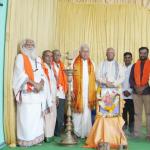
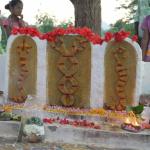

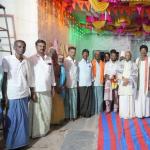
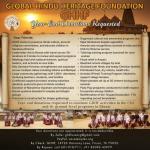
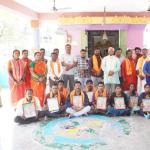
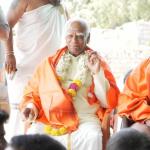


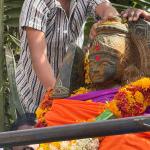
 Urgent support needed for Bangladesh Hindus
Urgent support needed for Bangladesh Hindus 



